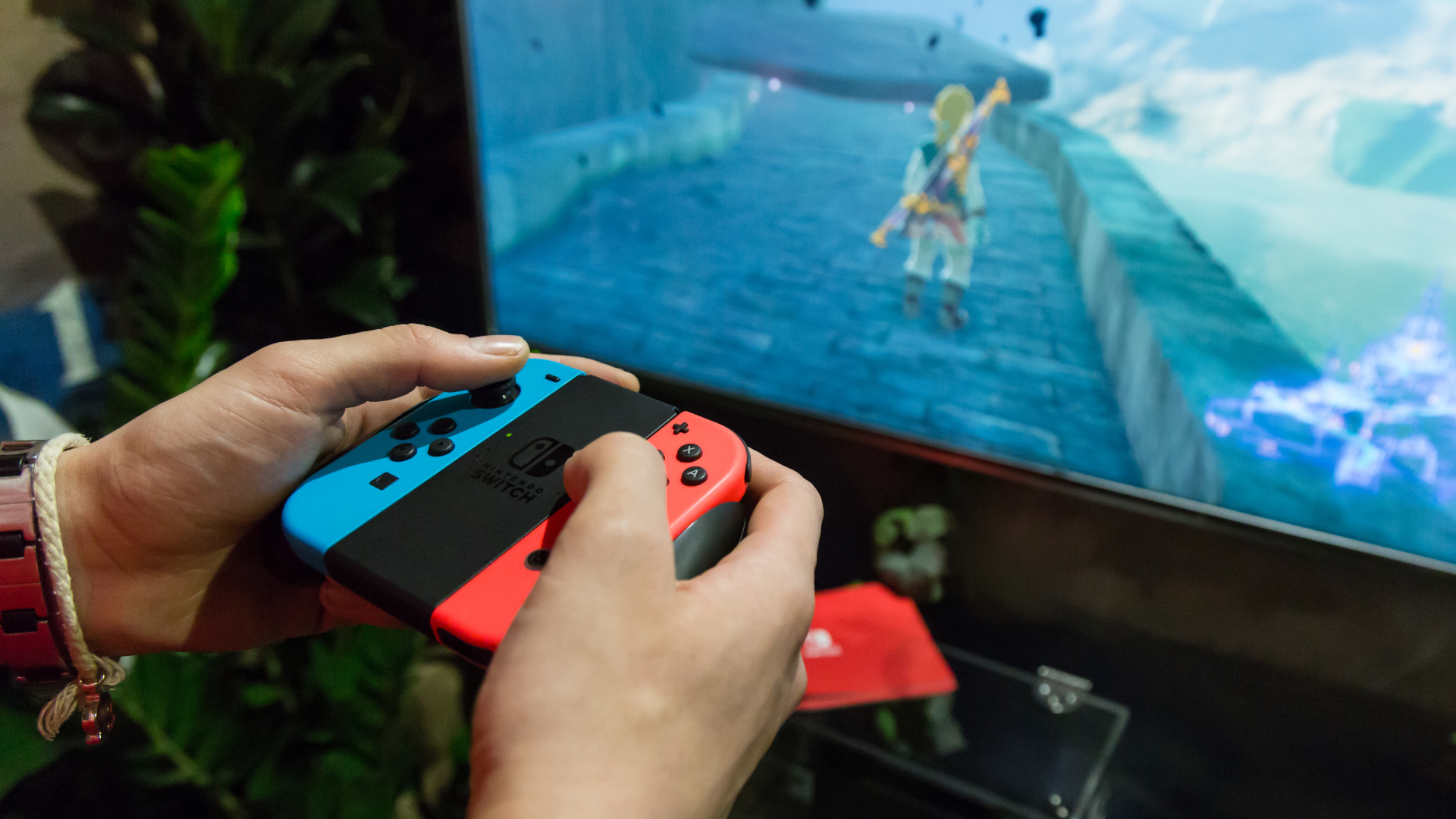
Is Nintendo Switch 4K capable? Nintendo’s portable machine isn’t known for its hardware prowess, despite being arguably the most versatile home console on the market right now. Whether you’re playing on the TV or on the go, the Nintendo Switch is capable of outputting HD resolutions, but is that all it can do?
When the Nintendo Switch launched back in 2017, there were concerns that the portable console’s power fell well short of its competition. Bear in mind, the PS4 Pro had just come out a few months prior, and Microsoft launched its own high-spec console, the Xbox One X, later that year. Both pro consoles supported 4K and upscaled resolutions.
While no model of Nintendo Switch natively supports 4K, that’s not to say it’s incapable of achieving higher resolutions than its official specs suggest. That’s if recent evidence of certain technologies being used in upcoming Switch titles is anything to go by.
Read on to learn more about the Nintendo Switch’s resolution capabilities, and if 4K is on the cards for the portable console or its successor.
Nintendo Switch 4K: what you need to know
The Nintendo Switch is capable of resolutions of up to 1080p when docked, and up to 720p when played in portable mode. The same is true for the Nintendo Switch OLED model, which does benefit from a sharper, more vivid display, but under the hood it’s not sporting a more powerful processor.
The Nintendo Switch is powered by Nvidia’s Tegra X1 GPU, an aging graphical processor that’s traditionally been used to power other portable devices, most notably the Google Pixel C tablet and the Nvidia Shield TV.
This leaves the Nintendo Switch feeling underpowered, especially when compared to the PS5 and Xbox Series X. To make matters worse, the Switch isn’t always capable of outputting 1080p in docked mode nor 720p in portable mode. Depending on how demanding a title can be, it’s entirely possible for the console to output soupy, sub-HD resolutions, particularly in handheld mode.
Sign up for breaking news, reviews, opinion, top tech deals, and more.
That performance dip is visible in larger, more detailed games like The Legend of Zelda: Breath of the Wild or Shin Megami Tensei 5, or titles that feature a lot of on-screen action, such as Hyrule Warriors: Age of Calamity or Doom Eternal.
However, the Switch’s sub-4K status may not be final. Nintendo has licensed AMD’s FidelityFX Super Resolution tech for the test version of Nintendo Switch Sports, which was available to play between February 18 - 20 for Nintendo Switch Online subscribers.
found an interesting license from Nintendo Switch Sports, lists FidelityFX Super Resolution (FSR) pic.twitter.com/cfQKslK6SgFebruary 16, 2022
FidelityFX Super Resolution (or FSR for short) is an algorithm that helps to boost resolutions with minimal hits to performance and graphical fidelity. In theory, the tech will allow the Switch to emulate 4K resolution without actually supporting 4K. In the case of Nintendo Switch Sports, we likely saw an upscale from 1080p, via FSR, to create a sharper image.
However, don’t expect the Switch to support FSR across the board, as AMD’s tech has to be applied on a per-game basis and, according to the discovered license, looks like it won’t be made available to third parties. The plus is that we may see more taxing Switch titles, such as the upcoming The Legend of Zelda: Tears of the Kingdom or Xenoblade Chronicles 3, use FSR for a cleaner look in both docked and portable modes.
Until we receive more concrete news on the Switch’s follow-up (tentatively referred to as the Nintendo Switch 2), the handheld hybrid’s best bet at emulating 4K is AMD’s FidelityFX Super Resolution tech, and we don’t really know how much Nintendo will plan to use it beyond Nintendo Switch Sports.
Hopefully, FSR’s capabilities and the general fan demand for a 4K console will convince Nintendo to make the jump. After all, it’s not the first time the Kyoto-based manufacturer has been slow off the blocks with higher resolutions (looking at you, Nintendo Wii).

Rhys is TRG's Hardware Editor, and has been part of the TechRadar team for over four years. Particularly passionate about high-quality third-party controllers and headsets, Rhys strives to provide easy-to-read, informative coverage on gaming hardware of all kinds. As for the games themselves, Rhys is especially keen on fighting and racing games, as well as soulslikes and RPGs.